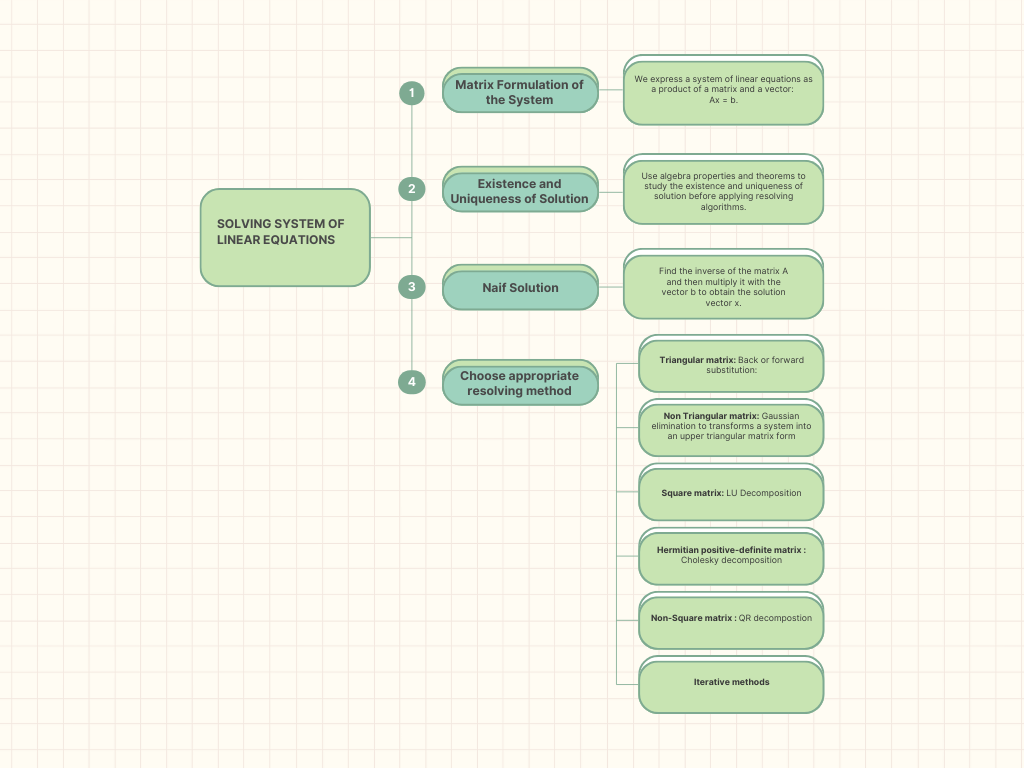System of Equations
In various engineering and economics applications, we need to solve systems of equations.
A system of equations is a collection of equations sharing the same variables. It can be written as:
f1(x1, x2, ..., xn) = a1 f2(x1, x2, ..., xn) = a2 ... fm(x1, x2, ..., xn) = am
Solving this system involves finding the variables x1, ..., xn that satisfy all equations.
System's size
The size of a system of equations is a crucial parameter when looking to solve it. We differentiate between two types of systems:
Fixed-Size Systems
Fixed-size systems are systems of equations where the number of equations and variables is known and remains constant. The number of variables and equations in these systems does not change when we change the problem’s input data.
Variable-Size Systems
Variable-size systems (also known as dynamic systems or adaptive systems) are systems where the number of equations and/or variables can change. For example, if we are modeling traffic flow in a city and forming an equation for each intersection, the number of equations in our system will vary depending on the city size. These types of systems require more vigilance because the growth of the system can be computationally expensive.
Linearity of the System
Before exploring methods for solving systems of equations, it is fundamental to study the linearity of the system:
- Linear Systems: Systems where each equation is linear.
- Nonlinear Systems: Systems with at least one equation that is not linear.
Existence and Uniqueness of Solutions
Once the type of the system is determined, we can study the existence and uniqueness of a solution:
- No Solution: The system is inconsistent
- Unique Solution: The system is consistent and independent.
- Infinite Solutions: The system is consistent and dependent
Methods for Solving Systems of Equations
For solving systems of equations, different methods are used based on the type of system:
Nonlinear Systems
We offer one approach to solve nonlinear systems, which is Newton-Raphson method, though other methods exist.
Linear Systems
Linear systems are viewed as the following equation: \(\mathbf{A} \mathbf{x} = \mathbf{b}\)
We use matrix \(\mathbf{A}\) characteristics to choose the optimal method for solving the system, such as:
- Matrix Inversion
- Gaussian Elimination
- LU Decomposition
